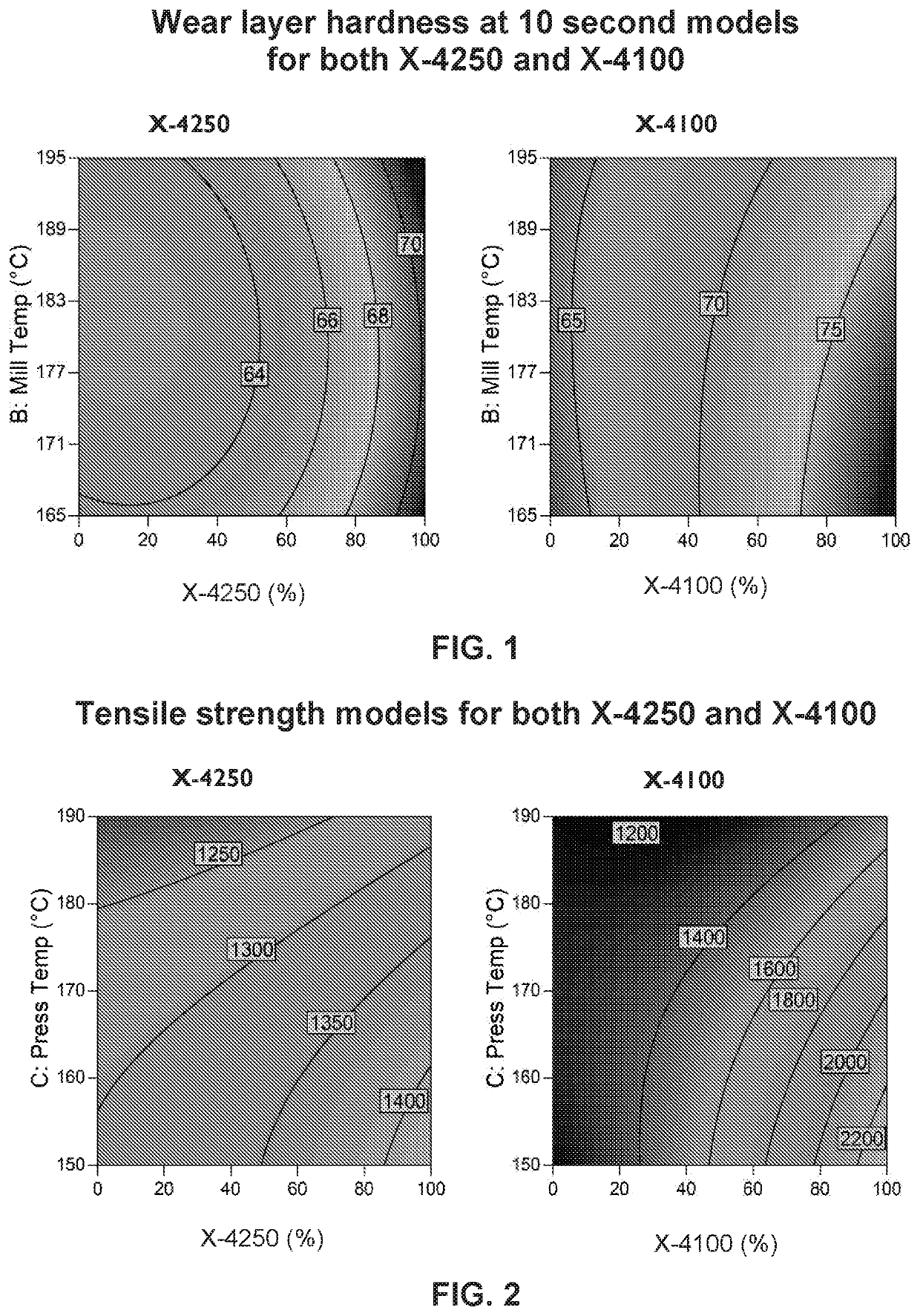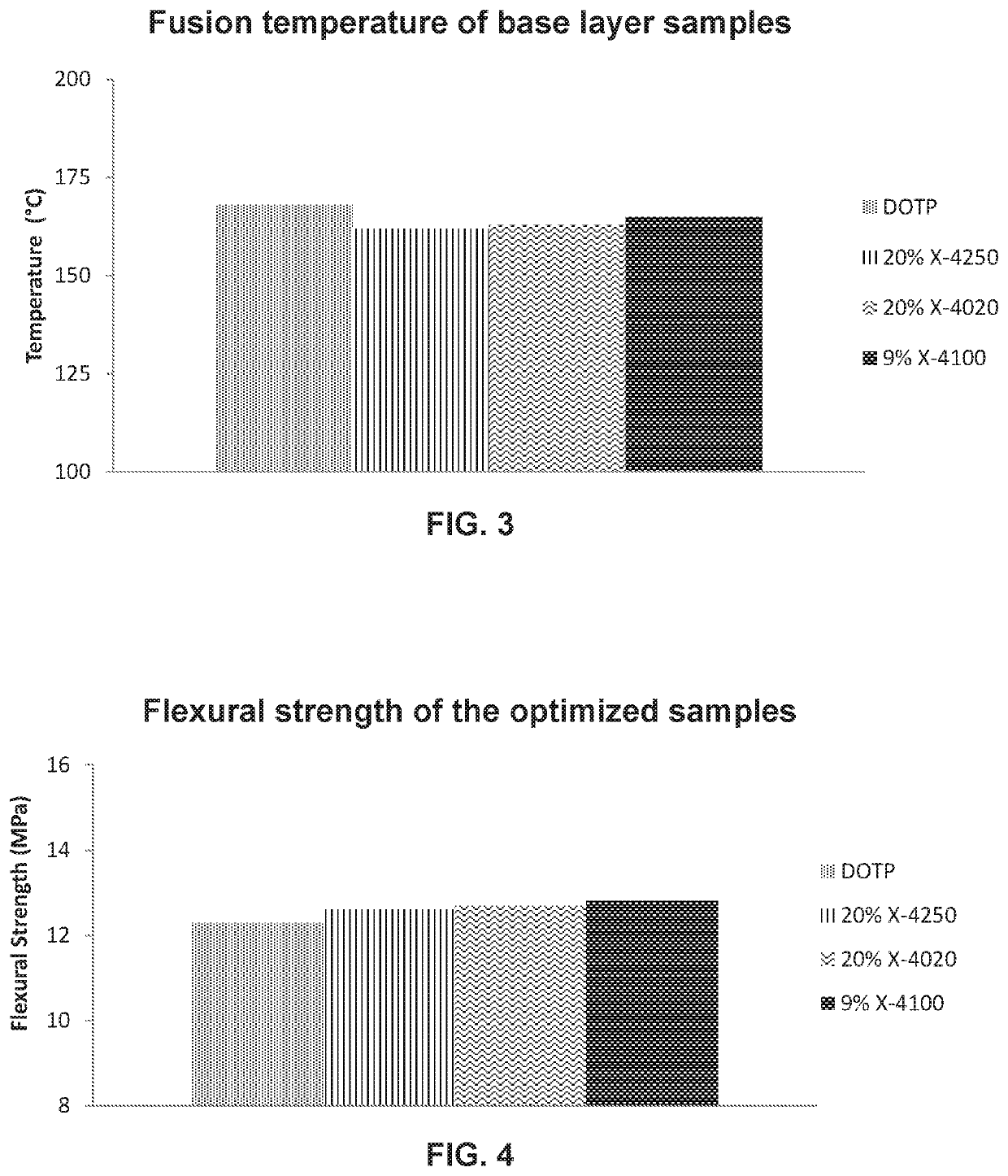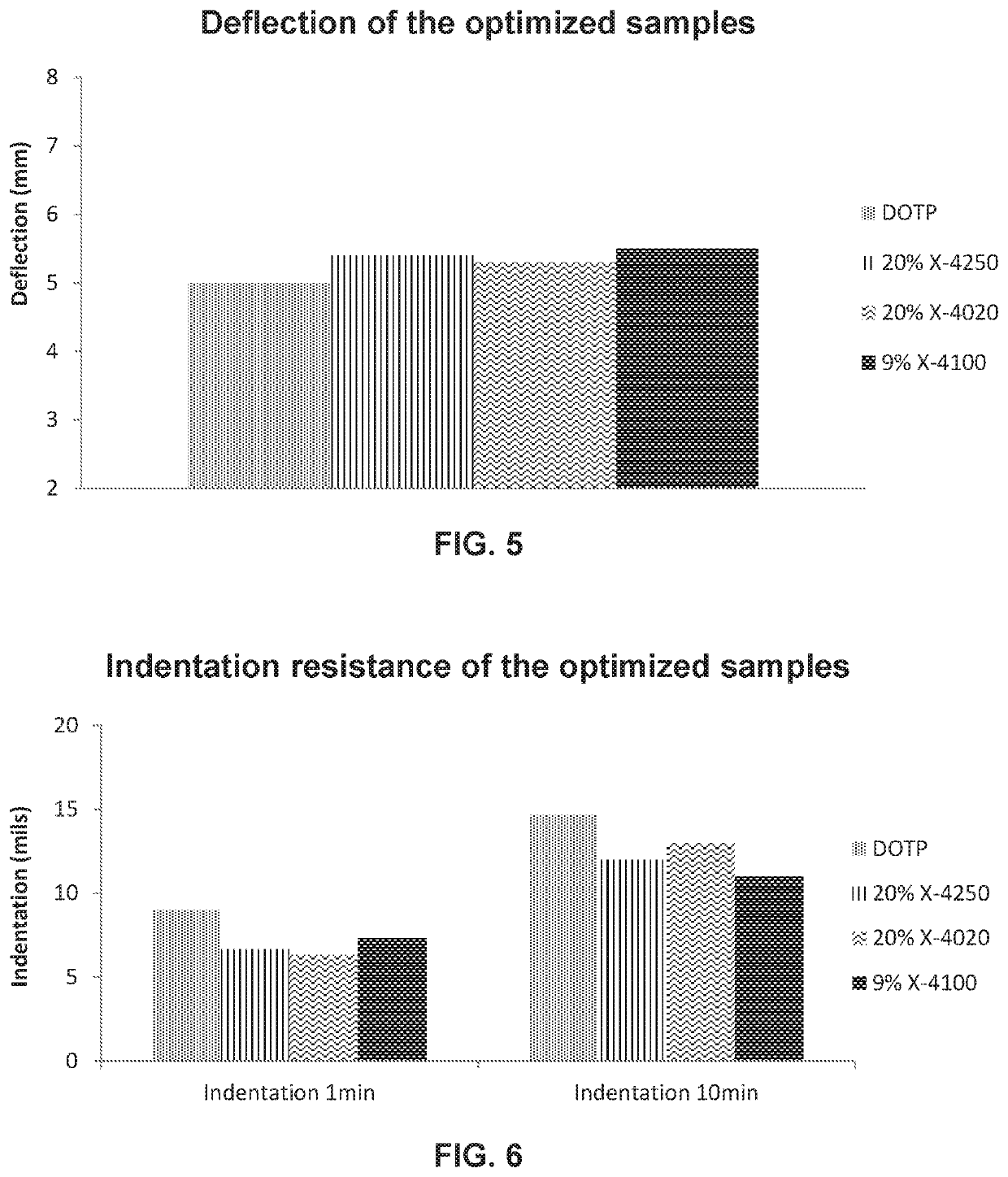Modifiers for luxury vinyl tile to increase hardness and rigidity
- Summary
- Abstract
- Description
- Claims
- Application Information
AI Technical Summary
Benefits of technology
Problems solved by technology
Method used
Image
Examples
example 1
e DOE's
[0105]In order to determine an appropriate loading % of dibenzoate plasticizers for use in LVT and the processing conditions with which the samples should be prepared, a DOE was run using Stat-Ease DesignExpert© version 10. The model was an optimal (custom) design using optimality-I. Table 3 shows the factors used and the ranges for testing in the DOE.
TABLE 3Factors and Ranges Used for the DOEFactorRangeDibenzoates 0-100%Mill Temperature165-195° C.Press Temperature 50-190° C.Press Pressure 5-50 tons
[0106]The first response that was observed was the fuse time for both the base and wear layers. As expected, as both temperature and dibenzoate percentage (amount) was increased, the fuse time decreased. This relationship was stronger in the wear layer than in the base layer. This is a property that is expected to be achieved with the use of high solvating plasticizers, such as the dibenzoate modifiers of the invention.
[0107]The hardness of the samples was measured and, as anticip...
example 2
Testing—Dibenzoate Modifiers Vs. DOTP Alone
[0110]To see how the conditions in Table 4 varied from each other, samples were tested more in depth than the initial DOE examples above. For this example, three dibenzoates, X-4100, X-4250 and X-4020 were evaluated as modifiers for DOTP and compared to the use of DOTP alone. Amounts of X-4250 and X-4020 used were 20% of the total plasticizer load (balance 80% DOTP), and X-4100 was used at 9% of the plasticizer load (balance 91% DOTP).
[0111]The first observation was the fusion temperature, which was performed only on base layers. FIG. 3 shows the fusion temperature of the base layer samples. The use of all dibenzoate modifiers provided a decrease in fusion temperature, even considering that the amount of plasticizer was relatively small compared to the rest of the formulation.
[0112]LVTs are installed by snapping two tiles together. In order to see which tile had a greater strength and could bend more before breaking, the flexural properties...
example 3
DOE
[0119]Based on the results found in the extensive, in-depth testing of the dibenzoate-modified samples as compared to DOTP alone using the loading and process conditions of Table 4, Example 2, the following tests were added to the original DOE samples: indentation resistance, flexural modulus, flexural strength, deflection, curling and water absorption. As expected, based on the results above, all the flexural parameters were impacted by dibenzoate concentration, but they were also impacted by the press temperature and press pressure. FIG. 9 shows the flexural strength models for both X-4250 and X-4100 samples, in which dibenzoate amounts (%) and press temperature were modeled.
[0120]Both curling and water absorption testing showed no impact or very little impact (results not shown) by changing any of the factors used in the DOE (see Table 3).
[0121]The indentation resistance is related to all of the parameters of Table 3 and was increased by increasing dibenzoate amount (%), mill ...
PUM
| Property | Measurement | Unit |
|---|---|---|
| Fraction | aaaaa | aaaaa |
| Fraction | aaaaa | aaaaa |
| Fraction | aaaaa | aaaaa |
Abstract
Description
Claims
Application Information
 Login to View More
Login to View More - R&D
- Intellectual Property
- Life Sciences
- Materials
- Tech Scout
- Unparalleled Data Quality
- Higher Quality Content
- 60% Fewer Hallucinations
Browse by: Latest US Patents, China's latest patents, Technical Efficacy Thesaurus, Application Domain, Technology Topic, Popular Technical Reports.
© 2025 PatSnap. All rights reserved.Legal|Privacy policy|Modern Slavery Act Transparency Statement|Sitemap|About US| Contact US: help@patsnap.com



